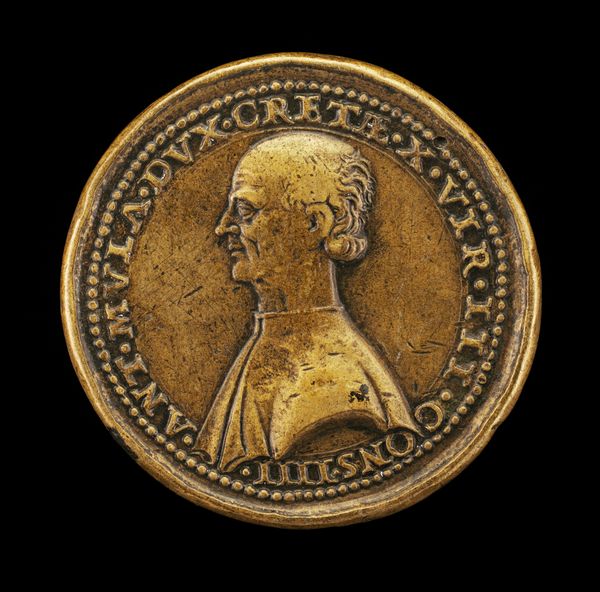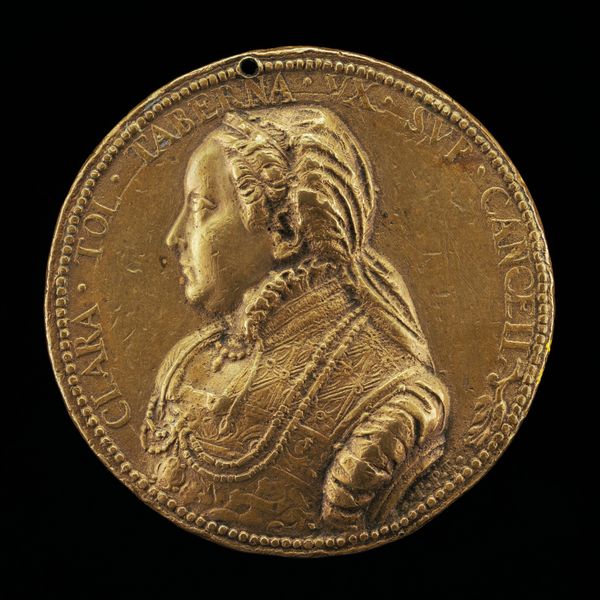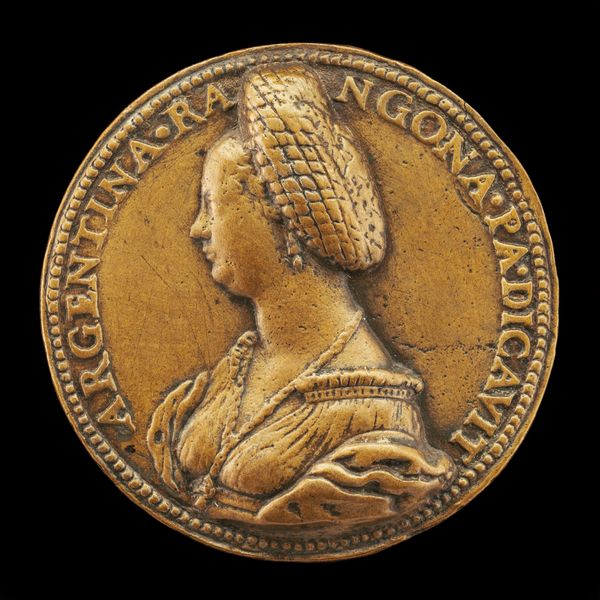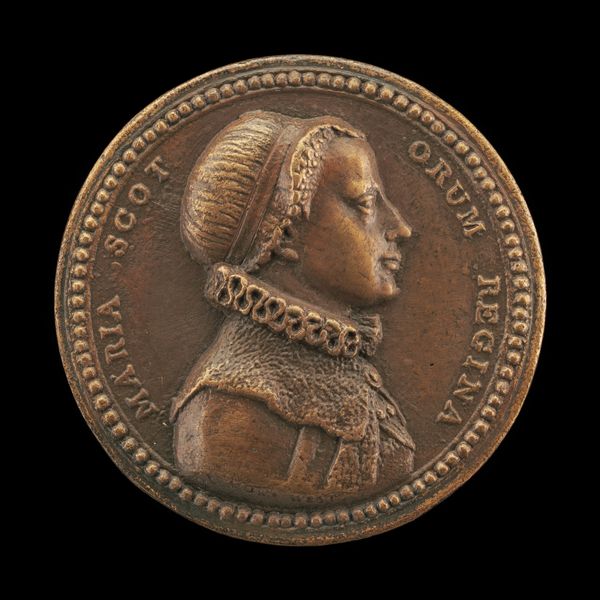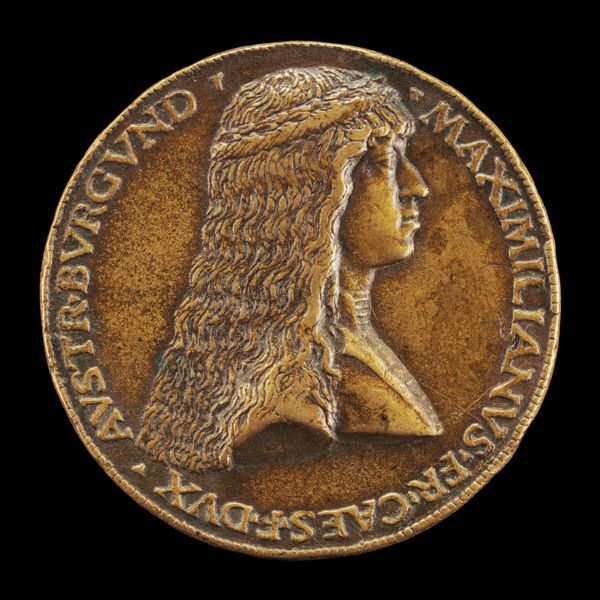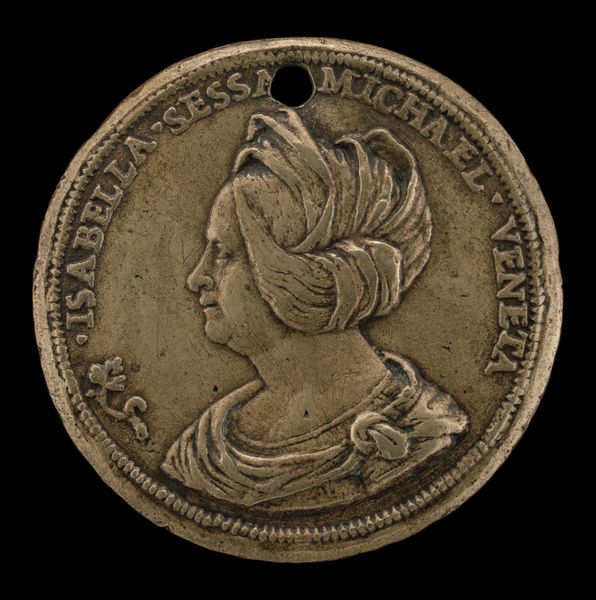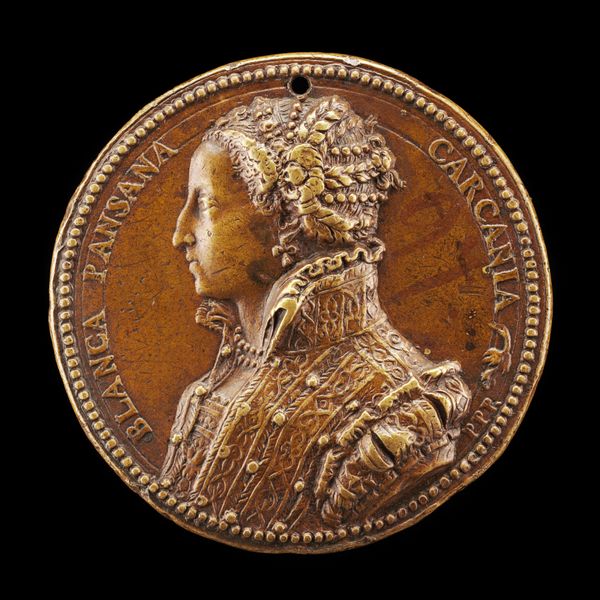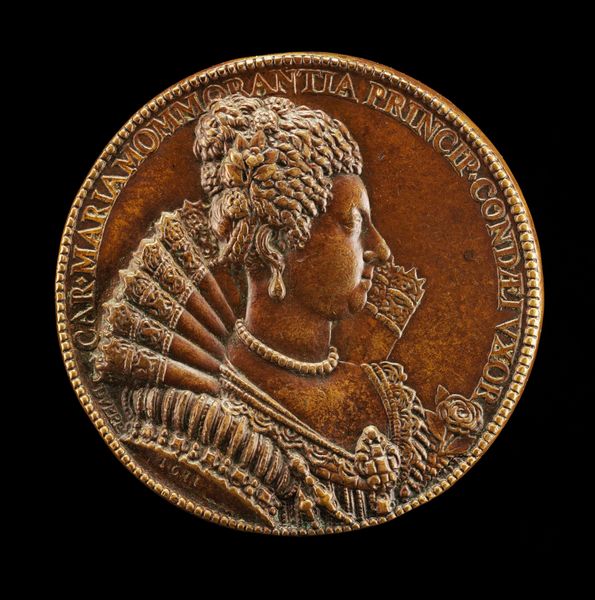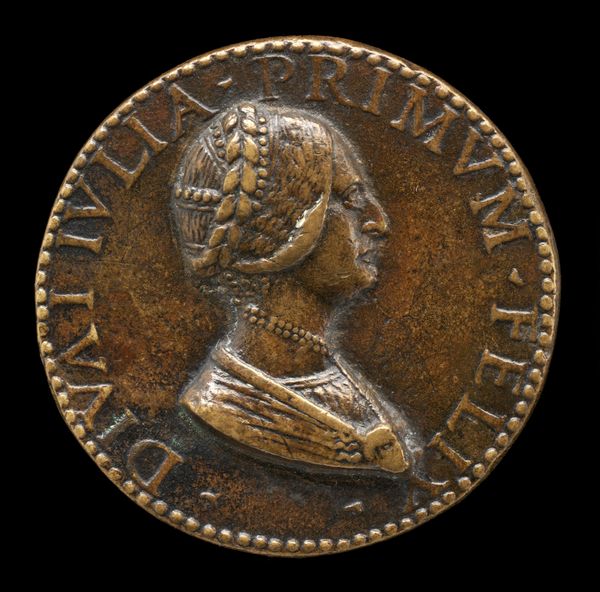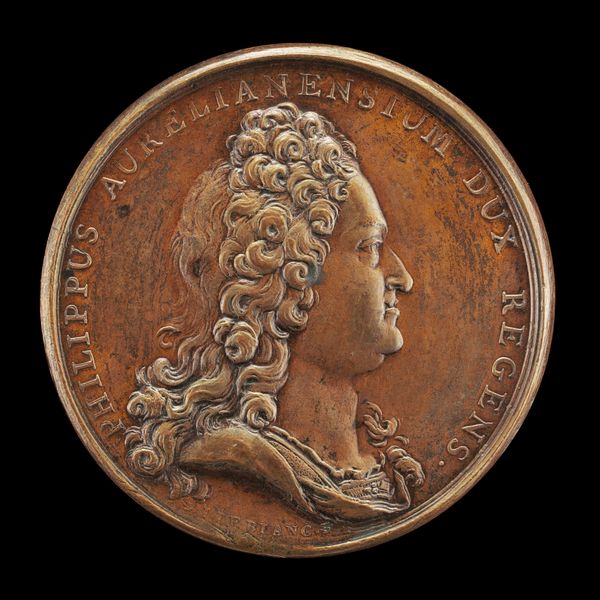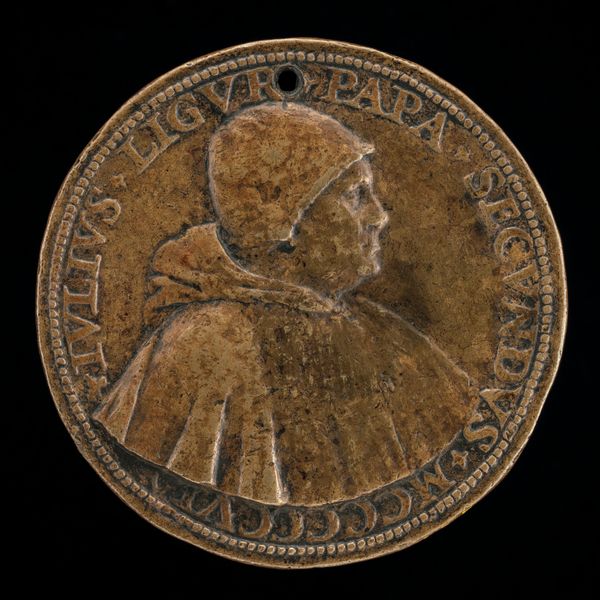![Diane de Poitiers, 1499-1566, Wife of Louis de Breze, Duchess of Valentinois 1548 [obverse] by Anonymous](/_next/image?url=https%3A%2F%2Fd2w8kbdekdi1gv.cloudfront.net%2FeyJidWNrZXQiOiAiYXJ0ZXJhLWltYWdlcy1idWNrZXQiLCAia2V5IjogImFydHdvcmtzLzUyODU5YzhjLWJmNmMtNDJiYi1hMzFjLTM0YTk0ZjdhMTBmMC81Mjg1OWM4Yy1iZjZjLTQyYmItYTMxYy0zNGE5NGY3YTEwZjBfZnVsbC5qcGciLCAiZWRpdHMiOiB7InJlc2l6ZSI6IHsid2lkdGgiOiAxOTIwLCAiaGVpZ2h0IjogMTkyMCwgImZpdCI6ICJpbnNpZGUifX19&w=3840&q=75)
Diane de Poitiers, 1499-1566, Wife of Louis de Breze, Duchess of Valentinois 1548 [obverse] c. 1525
0:00
0:00
bronze, sculpture
#
medal
#
bronze
#
11_renaissance
#
sculpture
#
italian-renaissance
Dimensions: overall (diameter): 5.31 cm (2 1/16 in.) gross weight: 49.05 gr (0.108 lb.) axis: 12:00
Copyright: National Gallery of Art: CC0 1.0
Editor: This bronze medal, depicting Diane de Poitiers, dates back to around 1525. I’m struck by its formality and how it seems to elevate her status. What do you see in this piece? Curator: I see more than just an elevation of status; I see a careful construction of female power within a patriarchal system. Consider the historical context: Diane de Poitiers was a prominent figure, wielding influence as the mistress of King Henry II. How does this knowledge change your perception of the medal's formality? Editor: It makes me think that it isn’t only a formal portrait. It also represents power through her connection with the King. How was bronze as a medium part of this self-fashioning? Curator: Exactly. Bronze, associated with strength and durability, symbolically embodies her resilience and lasting impact. Furthermore, the inscription emphasizes her status - "DIANA.DVX.VALENTINORVM.CLARISSIMA", which could be interpreted as an explicit claim to nobility in her own right, or it may underscore the complex dynamics of female agency in the Renaissance court. To what extent do you think this medal challenges or reinforces conventional representations of women? Editor: I think it's doing both. By literally being a type of "coin", it is reinforcing the male economic system. Yet it is celebrating her on it and is a visual tool to give her importance and power in an era where women held much less importance than their male peers. Curator: A nuanced observation. This tension encapsulates the ongoing struggle for female representation throughout history, the use of portraiture as a tool, and how women, even in subordinate positions, strategize their place in politics, family and legacy. Editor: This really reframes how I initially saw it. Thank you for opening up the layers of meaning behind what appears to be a standard historical portrait. Curator: My pleasure. Remember, the goal isn’t simply to appreciate the artwork, but to interrogate the systems of power it embodies.
Comments
No comments
Be the first to comment and join the conversation on the ultimate creative platform.
